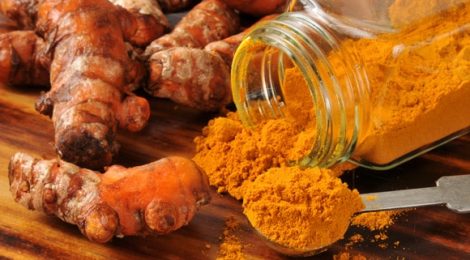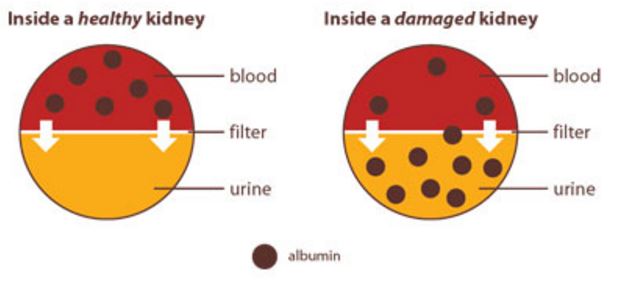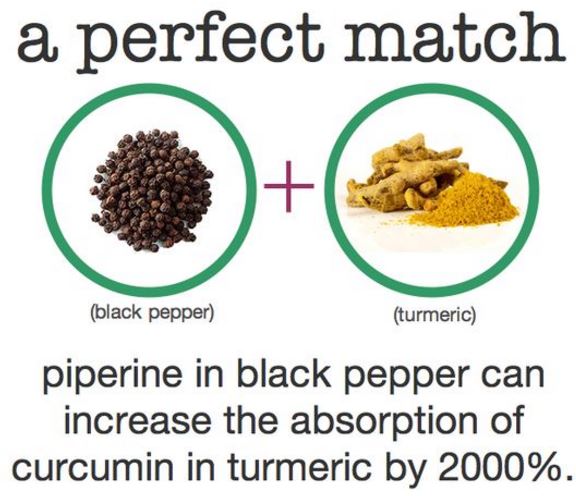
Turmeric Curcumin Ameliorates Kidney Disease and Diabetes Harm
New research show curcumin turmeric effectively reduces diabetic kidney disease harm – protein loss and rising serum creatinine.
Evidence as well of a second independent pathway of harm in diabetes that is not blood glucose related.
It may be a study in mice but I’ll take it…
Squeak squeak, I don’t mind at all being a mouse.
The study, published in January 2017 in Biomed Research International, evaluated the effects of curcumin treatment on diabetic nephropathy in diabetic and non diabetic mice and investigated the underlying mechanisms in the underlying afflicted renal tissues.

Albumin, a protein, precious to our health, is normally kept from leaking through our kidneys and lost in our urine. When one has kidney disease urine has more and more protein in it, a progressively bad sign. One sees protein loss when one pees in a toilet as foamy urine.
The results showed that curcumin, aka turmeric, treatment decreased renal hypertrophy, improved renal function (as assessed using the urinary albumin excretion rate), and ameliorated renal histological changes in db/db mice.
Notably the effects seen in this curcumin turmeric treatment match or exceed the beneficial effects of massive steroid treatment in kidney medicine! Such steroid prescriptions most often come with terrible side effects. Turmeric side effects most often seen in kidney patients is the onset of a desire to eat more life saving curries.

Don’t forget the pepper
Curcumin, the yellow pigment of the plant Curcuma longa (turmeric), is extensively used in food preparation and has attracted considerable research attention for its various bioactivities. Curcumin has been well established to exert a variety of pharmacological activities, in particular anti-inflammatory activity. The equivalent daily human dose used in this study is about 2 gms/day for a 200 lb. person. Note that the researchers did not make use of the potent tumeric effect of mixing pepper with turmeric. ( Hint: I just buy my turmeric and finely ground black pepper in bulk and mix them immediately)
Of Mice and Men
The renal-protective effect of curcumin in animal specimens with chemically induced kidney disease is well known. Such rats/mice are a proven model of type 1 diabetes in humans though little has been known about the role of curcumin in .diabetic free and diabetic induced mice. This new research shows a major benefit of this mousy model in that it offers a consistent temporal/time based development type 2 diabetes starting with hyperglycemia (6–8 weeks), albuminuria (10–12 weeks), and kidney disease (14–16 weeks). Moreover, the kidney symptoms, glomerular mesangial expansion and histological lesions, in these mice resemble those found in human diabetic nephropathy and many other nephropathies.
One of the hallmarks of diabetic nephropathy is the development of proteinuria, protein loss in urine, which is usually followed by a progressive decline in renal function. Urinary albumin excretion is regarded as one of the earliest signs of glomerular damage in clinically apparent diabetic kidney disease. This damage is characterized structurally, aka in biopsy, by damage glomerular basement membrane thickening and mesangial expansion, which can be detected histologically as an increase in the PAS-positive mesangial matrix area, due to the accumulation of extracellular matrix proteins.
The symptoms here are consistent with the kidney disease known as IgA Nephropathy which is an auto-immune disease leading to chronic inflammation of kidney endothelial membranes and resulting deposits of protein and subsequent scarring and loss of membrane function.

Turmeric taken at a dose equivalent to about 1-2 gms per day for people shows kidney protective effects in our mousy cousins. click to enlarge
In this study, the researches showed that elevated urinary albumin excretion, membrane damage, and the increasing collagen IV and fibronectin in such membranes were lower in the curcumin group than in the control group. In addition, remarkable changes were observed in body weight, kidney weight, and SCR levels after curcumin treatment.
These findings indicate that curcumin inhibited disease progression in the early stage of diabetic nephropathy. Given that diabetic nephropathy and many other glomeruleo-nephritis conditions including IgAN have very similar symptoms and progressive character surely this study serves both conditions.
Evidence of second damage pathway in Diabetes
Curiously the study demonstrated that blood glucose levels were not affected by curcumin treatment, indicating that the kidney-protective effects of curcumin are independent of any hypoglycemic action in this animal model of diabetic nephropathy. The obvious conclusion one is drawn to make is that diabetes is NOT just a blood glucose disorder, the damaging effects of high blood glucose are only ONE of the many deleterious effects of diabetes, both type 1 and type 2.

Precise genes are identified that are associated with IgAN, Berger’s Disease. IgAN Patients with this genotype have abnormal sugars which lead to abnormal IgA proteins. click to read more
The authors note that the renoprotective effects of curcumin may be in its well know anti-inflammatory action. Curiously this action is closely tied to the behaviour of lipopolysaccharides which this blog has noticed has a significant role in kidney disease, as in our recent blog post on the identification of genetic markers in IgAN that afflict our O-glycosylation system, aka a lipopolysaccharide.
Curcumin clearly displays renoprotective effects after disease onset in diabetic mice despite sustained hyperglycemia. The protective effect of curcumin in diabetic nephropathy may be attributable, at least in part, to the inhibition inflammation.
Recent Comments